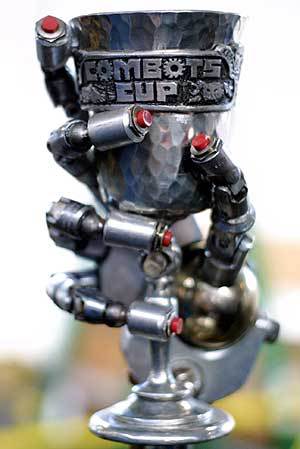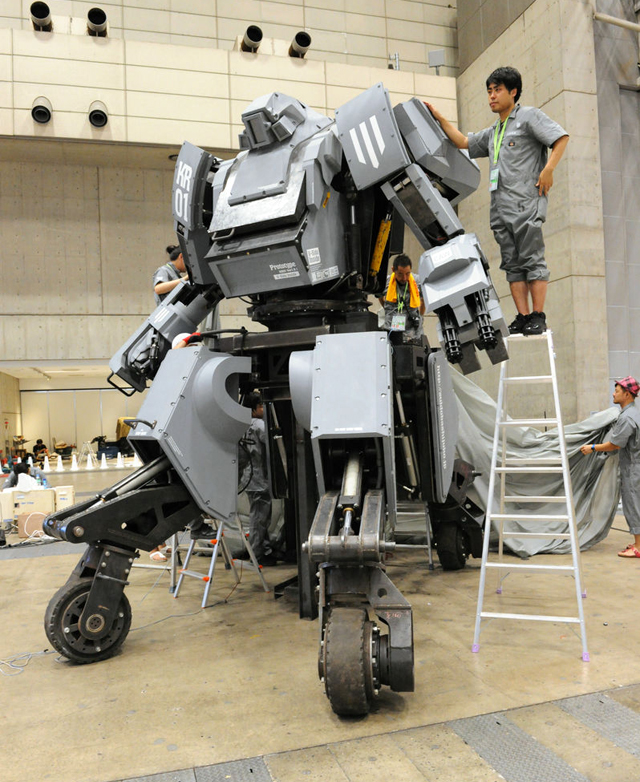 Premiering in 2003, the Combots Cup is a continuation of the sport of robot combat started by the television show BattleBots which aired from 2000 to 2002. Even though the television show was deemed unprofitable, the idea of robot combat sparked the passion of the competitors which have been hosting the Combots Cup and Robo Games robot Olympics for the last 10 years. Interestingly enough, they still use the same style arena, rules and weight classes of the original BattleBots series. There are three popular types of combots: the basic wedge, pneumatic lifters and the high speed spinners. The winner of the tournament gets to take home the Combots Cup pictured to the left and put their name on it until next year’s event. The Tested channel on YouTube covered the 2012 Combots Cup and had a chance to interview the founder of the organization as well as some of the veteran robot builders. There’s also some fight footage:
Premiering in 2003, the Combots Cup is a continuation of the sport of robot combat started by the television show BattleBots which aired from 2000 to 2002. Even though the television show was deemed unprofitable, the idea of robot combat sparked the passion of the competitors which have been hosting the Combots Cup and Robo Games robot Olympics for the last 10 years. Interestingly enough, they still use the same style arena, rules and weight classes of the original BattleBots series. There are three popular types of combots: the basic wedge, pneumatic lifters and the high speed spinners. The winner of the tournament gets to take home the Combots Cup pictured to the left and put their name on it until next year’s event. The Tested channel on YouTube covered the 2012 Combots Cup and had a chance to interview the founder of the organization as well as some of the veteran robot builders. There’s also some fight footage:
Here’s some bonus high speed footage of the 2012 Combots Cup Champion, Last Rites. Wheelchair motors move it around the arena while an over-volted 25 horsepower golf cart motor spins its blade up to 2500 rpm producing a tip speed of 400 mph. The guys from the Distort channel set it loose on some used furniture and filmed the devastation in high speed.
Sources: Tested and Distort on YouTube

